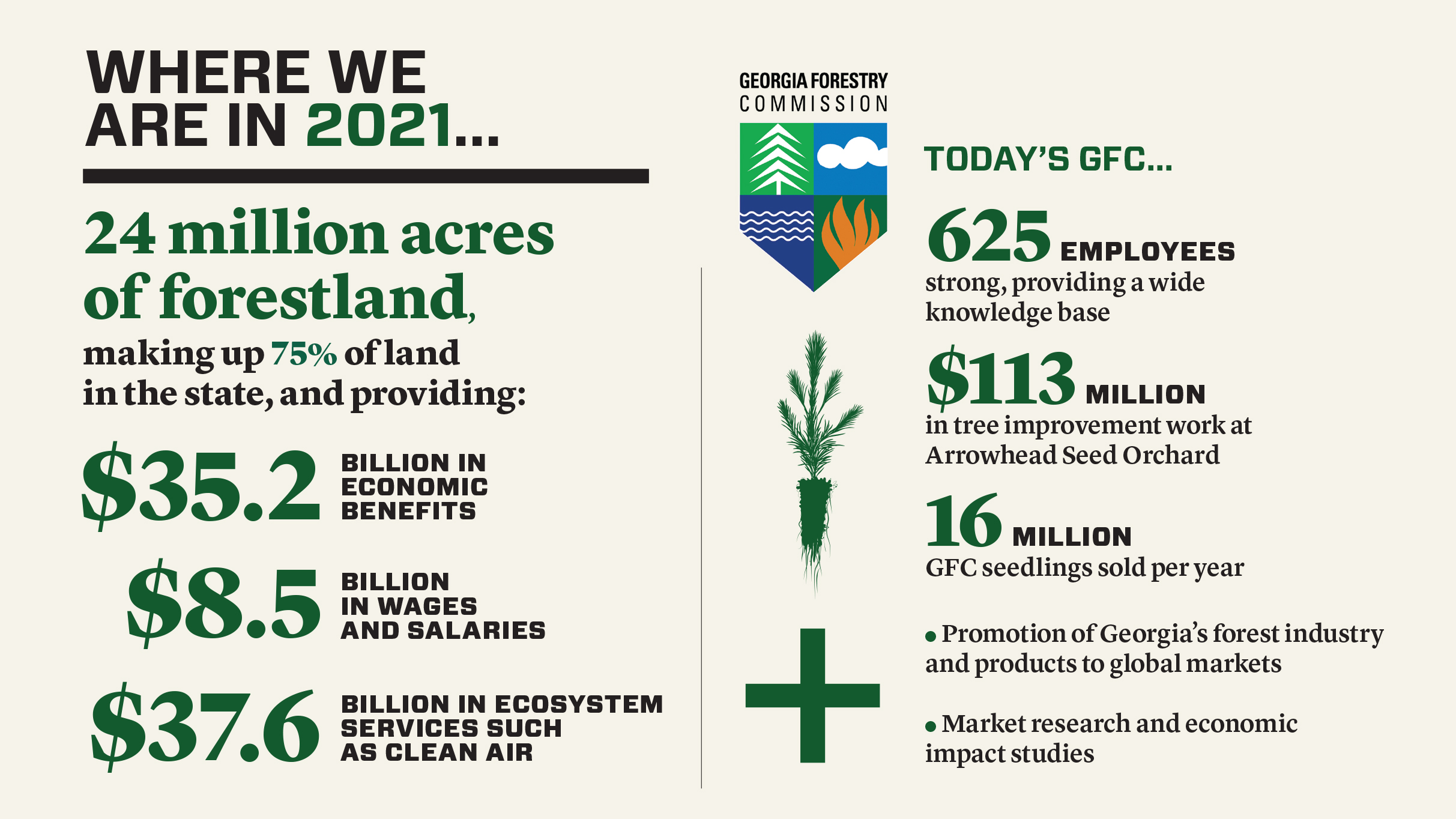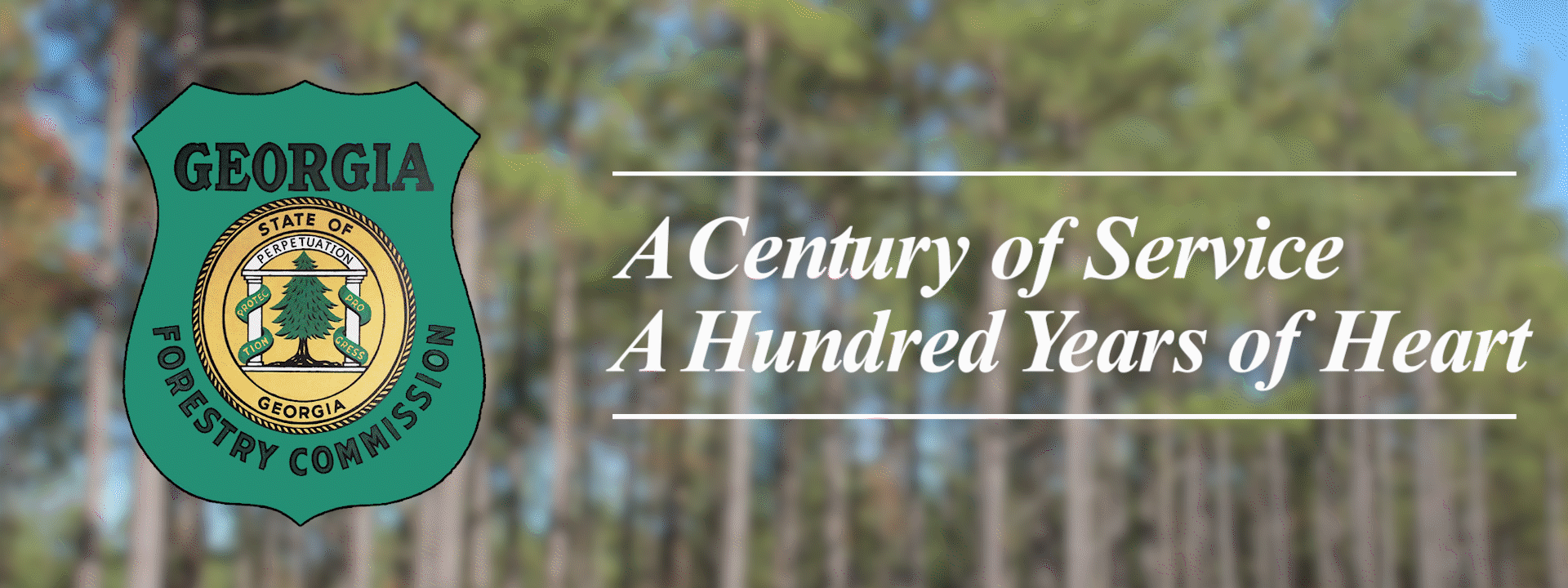Long, long before there were people dedicated to the sustainability of the resource, there were trees. Millions upon millions of acres, stretching beyond the horizon in every cardinal direction.
The Beginning of Forestry and Birth Year of GFC
In Georgia, where longleaf and slash pine naturally grew, Native Americans made homes in the forests and tools from their bounty. European settlers followed, timber became recognized as a great source of revenue, and its value led to the creation of an industry of seemingly endless supply. That is, until cleared lands outpaced natural regeneration and professional forestry’s founders took notice, and action.
Advocacy for Georgia’s forests mirrored a national push for organized forest management. In 1875, the American Forestry Association was founded for the “protection, propagation, and the planting of useful trees.” By 1880, Georgia ranked first in the South in total lumber production, and in 1888, like-minded forest leaders collaborated to form the Southern Forestry Congress at a meeting in Atlanta.
Desire for forest protection led to the establishment of state forestry departments in every southern state. As a result, the Georgia General Assembly passed the Forestry Act of 1921, providing for a State Board of Forestry. The year 1921 is recognized as the birth year of the Georgia Forestry Commission (GFC).
1922 - Present
In its report to the 1922 General Assembly, the Board focused on the economic importance of forests to Georgia and potential threats posed by a lack of conversation practices. The report also showed declining timber harvests, the waning naval stores industry, increasing soil erosion, and rising state unemployment from forest depletion.
One hundred years have brought monumental change to the forest industry and to the state agency that protects and conserves the public and private forest resource by providing leadership, service and education. Yet some of the foundational issues raised a century ago ring familiar today. While Georgia landscapes are covered with more than 24 million acres of trees, land use changes pose an ongoing threat to forest sustainability. Through ongoing assessment and reporting protocols, the GFC addresses individual challenges with detailed strategies. Every day, science guides dedicated GFC professionals who recognize their responsibility to a resource that provides a truly remarkable variety of benefits to us all.
GFC employees’ jobs have changed dramatically in the last century. Today’s technology and tools would no doubt astound early colleagues who fought fires with mule-drawn wagon-loads of water and shoved logs down a river toward the mill. What they would certainly have in common, however, is an innate connection to Georgia’s forested land, and to the neighbors they serve – yesterday, today and tomorrow.
Looking towards the Future
GFC IS EMBRACING…
- Changing technology to streamline business operations and service delivery.
Advancements including improved call centers, invoicing systems, electronic records, drones, apps for casework and resource tracking. - New products and values from the forest, including mass timber, carbon sequestration, biofuel and ecosystem services.
- Enhanced outreach and public education, including increased online and social media presence.
- Internal training, recruitment, retention and succession planning.

Past Director Memories:
- Fred Allen Memory of Fire Control to a Variety of Services
-
Fred Allen Memory of the Forest Inventory & Analysis Program
- Robert Farris Memory of Equipment Changes through the Years
- Ken Stewart Memory of the Georgia Carbon Sequestration Registry
- Urban Forestry in Georgia with Ken Stewart and Dale Higdon
-
GFC’s Centennial Memory of the “Right – Things – Right” mantra
Additional Resources:






